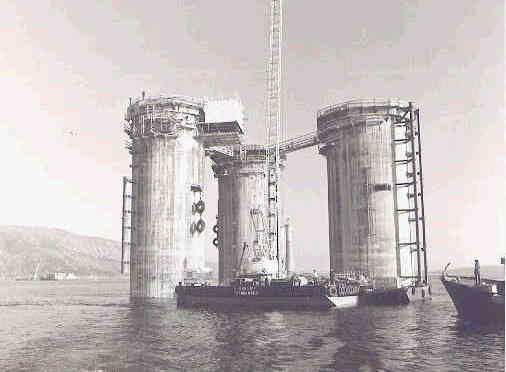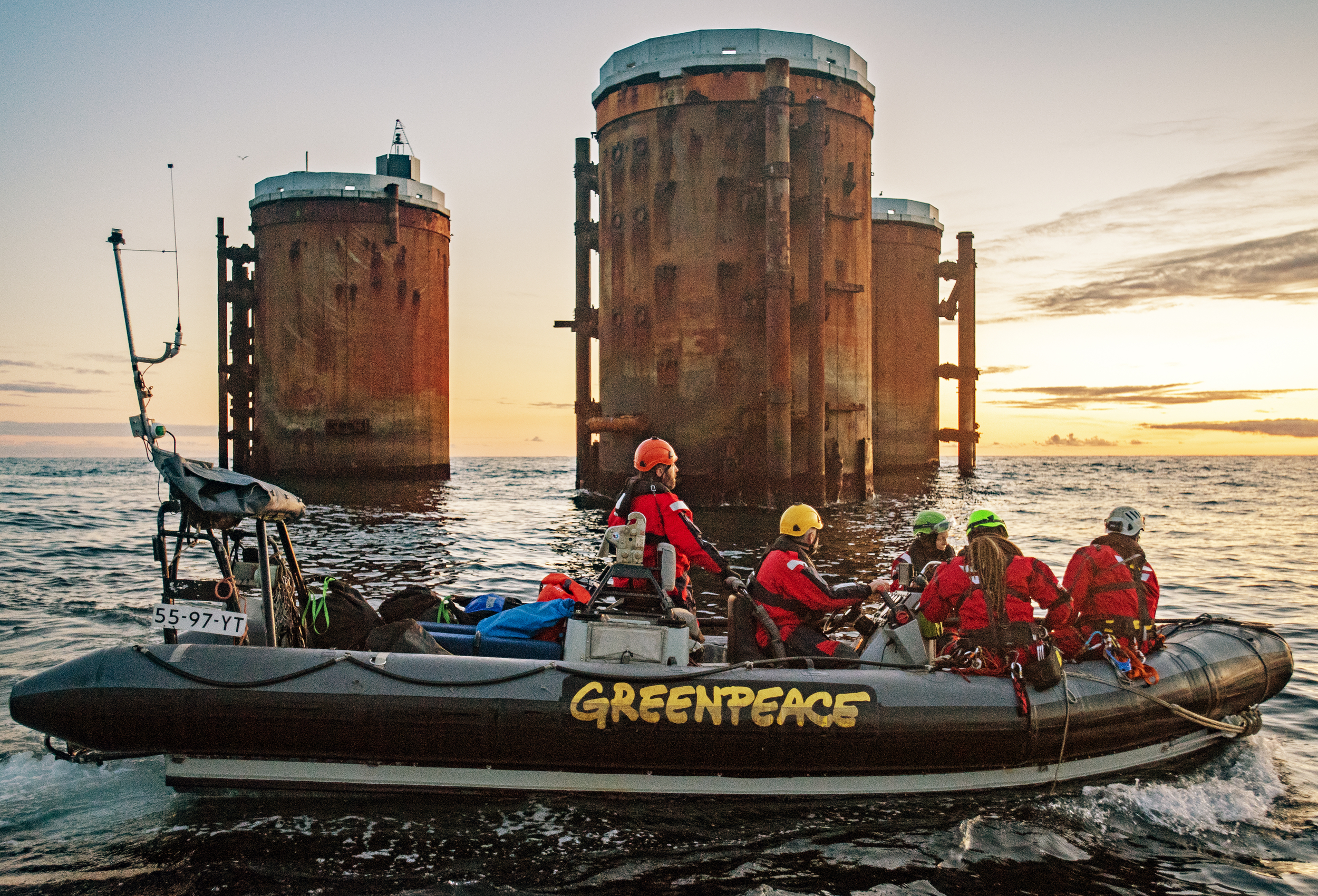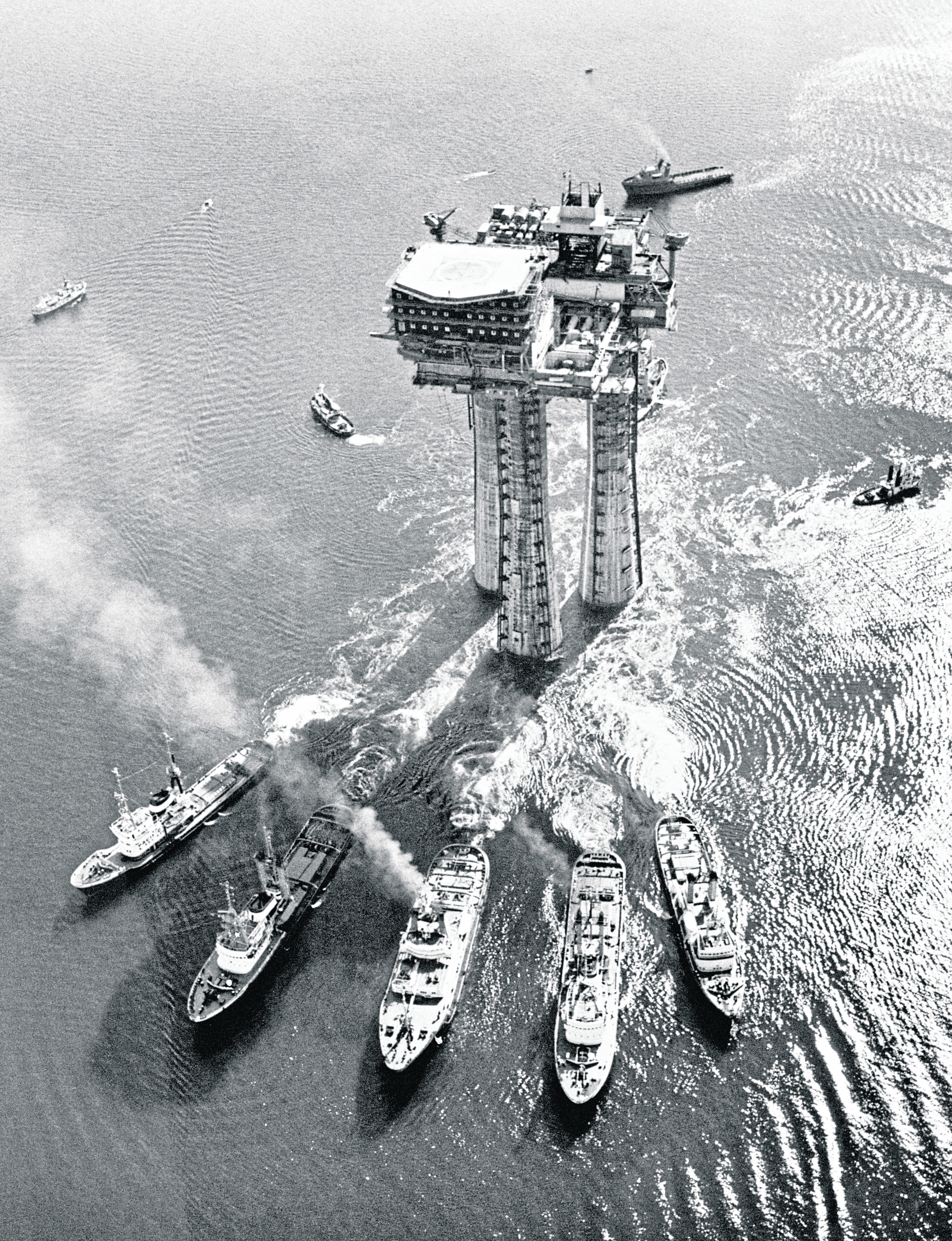
It was the beginning of an exciting week when Greenpeace announced they had sent activists to the middle of the North Sea to climb the remains of Shell’s Brent platforms, brandishing signs of “clean up your mess”.
But four days later, when a group of 15 European governments held a closed-door meeting on what to actually do with the Brent “legs”, the announcement was somewhat underwhelming.
“The United Kingdom, in accordance with Decision 98/3, will further engage in discussions with parties before taking a decision.”
Not exactly Christmas. From a news perspective, at least.
Last month’s meeting of Ospar, a convention to protect Europe’s marine environment, was always just part of the UK’s consultative process on the plans for Brent Bravo, Charlie and Delta, rather than a place for a final decision.
Once the UK has consulted, it has final say on whether to grant Shell’s application to leave the giant legs of the platforms in place.
This derogation would contravene Ospar rules which generally require the complete removal of oil and gas installations from the seabed at the end of their production lives.
It is not clear when the next talks will take place or what timeline the UK is working to for making a decision, though it is understood they won’t spring an approval out of the woodwork before the discussions are held.
Ospar’s announcement did finally formally recognise that the UK wants to grant Shell its application to leave the footings in place – something that has been widely reported but not officially recognised by the Department for Business, Energy and Industrial Strategy (BEIS).
“The meeting discussed the UK’s intention to issue derogation for leaving in-situ the footings of the Brent Alpha steel jacket and Brent Bravo, Brent Charlie and Brent Delta gravity-based concrete installations,” Ospar said.
While there is some concern around the danger leaving the legs in place could pose to marine traffic, the real issue relates to the contents of oil storage cells within the gravity-based structures (GBSs).
They weigh around 300,000 tonnes apiece. Within each base is a cluster of oil storage cells – 64 in total, each taller than Nelson’s Column.
It is estimated these contain 11,000 tonnes of oil, and opposition countries like Germany and the Netherlands, backed up by Denmark and the EU Commission, argue leaving the contents in place is “unacceptable”. ‘
Shell said it had carried out more than 300 scientific and technical studies into the decommissioning plans, with leaving “in situ” the best option.
The energy major said the oil itself is not free floating but bound to sediment comprised of sand, grit and water, which Shell said is encased within one metre thick reinforced concrete structures which will take “centuries” to degrade.
As a result any environmental benefit would be outweighed by the cost and risk of removal.
Shell’s comparative assessment – which Germany has questioned – has set out options on how the contents could potentially be removed or protected.
Options one and two relate to removing the contents and either re-injecting them into subsea wells or taking them ashore for treatment. Shell said it would be “very challenging” to drill a large hole into a concrete cell at a depth of 120 metres and safely extract the contents without some being released into the sea.
Option three would leave the contents in place with a treatment called bioremediation – the use of naturally occurring organisms to biodegrade the oil within the sediment. The problem is that it would likely only affect the surface of the sediment – 20-30cm – with no guarantee of success.
Option four: Leave in place capped. Capping material like sand would be added to the GBSs to form a protective barrier between the sediment and the sea as the GBSs disintegrate. Meanwhile, biodegradation of the oil would also be carried out. However, 75% of the sediment are fluids so it would also need a “structural agent” like gravel at a higher volume than the capping material, making it challenging. Shell also said the capping agent would only provide a “limited amount of protection” when the GBSs do disintegrate.
So that just leaves the preferred fifth option of leaving the contents in place, protected by the GBSs for hundreds of years. In a worst-case scenario, Shell said their release would be restricted to an area a “little larger than the area already impacted around each platform by the historic drill cuttings”.
However, an independent report commissioned for the German Government earlier this year said Shell’s assessment process was largely based on “flawed” government guidelines which create a bias towards any option that has minimal decommissioning work.
Ultimately Shell argues that the risks outweigh the environmental benefits. The problem is that these structures, put in place in the 1970s, were not created with removal in mind. It was only in more recent years that oil firms have needed to show how they would eventually remove platforms when they submit their field development plans.
According to Professor Alex Kemp, petroleum economist at Aberdeen University, the UK Government has historically followed Ospar rules. However, there are derogations allowed where the costs and risks of complete removal are exceptionally high.
The Frigg field on the UK-Norway border, fully decommissioned in 2010, also had GBSs and was granted derogation to keep them in place.
The difference is that the Frigg structures were never used for the storage of crude oil.
Prof Kemp highlighted that the residual liability rule applies for Brent, meaning Shell has liability in perpetuity for any issues that arise after decommissioning.
Prevention will be a preferred approach for many Ospar countries, although the residual rule could play a “key part” in the deliberations.
Professor Kemp said: “The residual liability obligation could be a key part because that would make sure that if some bad accident happened or a leak then there is a clear responsibility to deal with that.
“That is likely to be highlighted but I think there would be an effort made within the Ospar members to try to reach some sort of agreement.
“The rules are that the current operators have a residual liability to deal with any problems which can emerge. That could include leaks, other accidents with ships hitting the remains, and so on.”
Time will tell what the outcome will be – BEIS remains tight-lipped on the way forward – but that’s not true of the German government.
The country’s environment minister released a fairly optimistic statement after the Ospar meeting last month, welcoming the prospect of future talks.
He said: “We now have the opportunity to set a clear course of action for the environmentally sound disposal of old oil platforms in the future, especially at a time when we are gradually forced to abandon oil, gas and coal. We will acquire a safe, environmentally friendly and climate-friendly way of dealing with the legacies of these energy sources. The close cooperation of the Ospar states provides a good basis for this.”
Recommended for you


 © Greenpeace
© Greenpeace